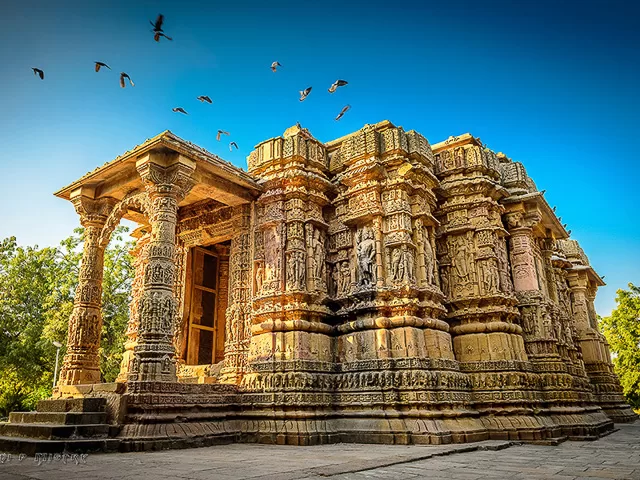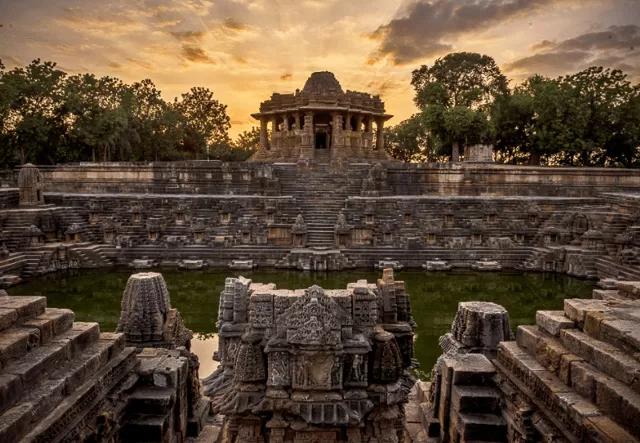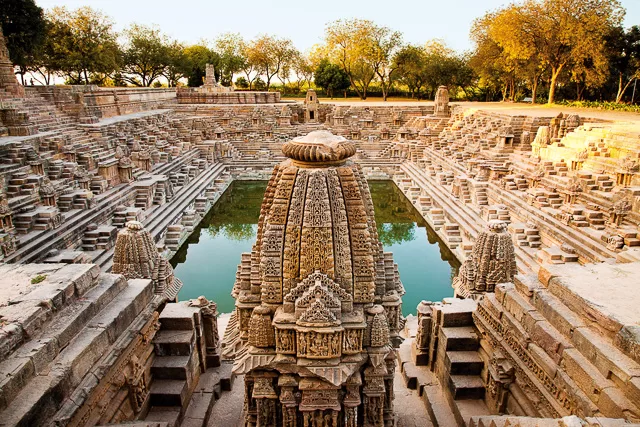About
Top Experiences
Type of Journey
Subscribe to newsletter and stay updated
Read about our travel expeditions, new destinations, new pictures, latest trip schedules
While touring the length and breadth of Gujarat, coming face-to-face with the architectural gems and treasures left behind by the Solanki rulers is inevitable. The historical living spaces, monuments, and temples with their intricate designs and classical style are bound to mesmerize you. What makes Gujarat one of a kind is its eclectic blend of autochthonous beauty and artistry, and thus, there is much for you to explore in this exotically vibrant state.
However, a particular leg of the journey, or, to be more precise, the part of the trip that includes a visit to the village of Modhera, will make you hesitant to leave for the next destination in your itinerary. The sight of the River Pushpavati coalescing perfectly with fully blossomed trees and the sweet melody of birds provides a sublime complement to the regal presence of the Sun Temple of Modhera. Immediately, all your worries are put to rest, your nerves relax, and your head is clear. That’s what Modhera Sun Temple does to its visiting pilgrims. The terra-formed garden surrounding the temple will rouse your aesthetic pleasure; the poetic inscriptions dedicated to the Sun God, carved in stone, will enamor you; and the narrative sculptures will pull you back in time. A slow walk around the temple while observing its premises, taking note of the architectural masterpiece of the structure, breathing in the fresh air, and imbibing the spiritual aura that is unique to the place will supercharge your energy levels. A trip to the Modhera Sun Temple would be an invigorating and unforgettable experience.
OVERVIEW
Location: Gujarat
Nearest Airport: Ahmedabad
How to reach: by air/road/train
Famous for: Sun Temple
Best time to visit: October-November
WHAT TO SEE
Sun Temple
History:
The temple complex was founded under the aegis of Bhimdev I of the Chalukya Dynasty in 1027 AD as an offering to the god of sun and life, Surya. Modhera is one district in Gujarat that has undergone transformation multiple times and housed settlements layer upon layer over time, with roots tracing back to antiquity. Legend has it that after defeating Ravana, Lord Rama and Sita reposed briefly in the region on their way back to Ayodhya from Lanka. A consultation with sage Vashishtha prompted Rama to perform a yagna to cleanse himself of the sin of having murdered a Brahmin, i.e., Ravana, who also happened to be a Shaivite and a close disciple of Lord Shiva. Since the yagna was performed under the supervision of a Brahmin who belonged to the Modh community, the village was named Modhera. The Modhera Sun Temple was declared a UNESCO World Heritage Site in 2014, and presently, the Archaeological Survey of India has undertaken the project of restoring and renovating the ruins of the temple.

Architecture:
Residing atop a lotus-shaped structure, the pillared Modhera Sun Temple’s walls are encased in edgy but detailed inscriptions and carvings. You’d be surprised to note that each carving has a story to narrate, be it an anecdote from the Mahabharata, the Ramayana, the lifecycle of humans, or teachings from the Kamasutra.
The entire Modhera Sun Temple is sectioned into three: the Surya Kund, the Sabha Mandapa, and the Guda Mandap.

The Modhera Sun Temple is, incidentally, the only temple to have a ceremonial tank or kund. The Surya Kund is a stepwell with pyramid-shaped steps featuring geometrical carvings. The next section, or the Sabha Mandapa facing the Surya Kund, was the place in the temple where people gathered for religious gatherings. Finally, a walk down the passage between the pillars and arches of the temple will bring you to its last section, the Guda Mandap, where you will notice the twelve different facets of the Sun God inscribed on its walls.
Symbolically speaking, the walk from Surya Kund to Guda Mandap signifies the transcendental journey from death to moksha.

Nearby Attractions:
Ahmedabad: After enjoying a revitalizing Modhera Sun Temple tour, it’s time to get moving in the direction of Ahmedabad to explore the architectural heritage and structural design that are special to the city. The traditional residential clusters that belong to the medieval period, i.e., Pols, and the Indo-Islamic monuments that are several centuries old have earned Ahmedabad the title of being the first city in India to secure a spot in UNESCO’s World Heritage City list of 2017.